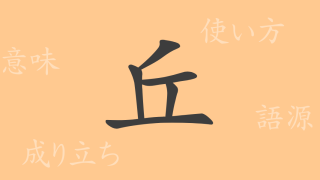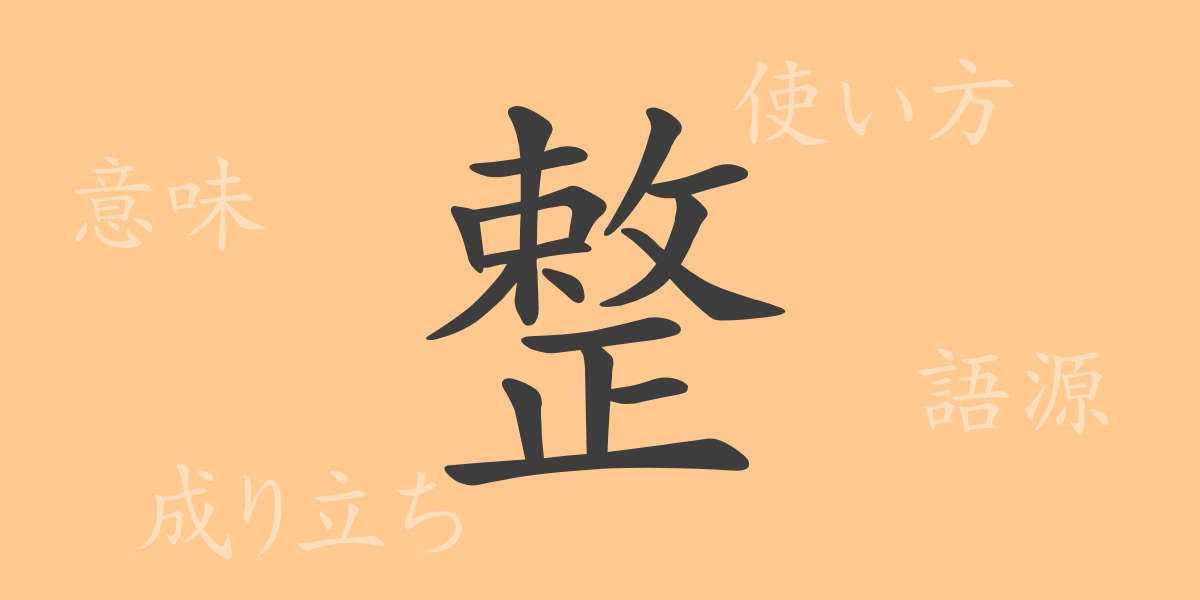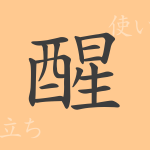The richness of the Japanese language is greatly shaped by each kanji character’s deep meanings and histories. Among these, the commonly used kanji ‘整’ (セイ, ととのえる, ととのう) frequently appears in our daily lives. This article delves into the allure of ‘整’, exploring its origins, contemporary uses, and its integration into daily expressions. From the basics of its composition to the cultural contexts it embodies, discover the often overlooked world of ‘整’.
Origins of 整
The kanji ‘整’ originated in ancient China, derived from the character ‘敕’. It was initially used to depict the act of arranging with the hands. As time passed, ‘敕’ split into the ‘攵’ radical and added ‘正’, evolving into the modern ‘整’. This character conveys meanings of rectifying and tidying up, symbolizing order and organization.
Meaning and Usage of 整
‘整’ represents states of orderliness and acts of arranging things properly. It appears frequently in everyday life in terms such as ‘整理’ (せいり ‐ organizing), ‘整頓’ (せいとん ‐ tidying up), and ‘整備’ (せいび ‐ maintenance), denoting a state of preparedness or orderly conditions. It is also used abstractly as in ‘心身が整う’ (しんしんがととのう ‐ one’s mind and body being in order), reflecting internal readiness and harmony.
Readings, Stroke Count, and Radical of 整
The kanji ‘整’ is fundamental within Japanese, with various readings and features vital for learning kanji.
- Readings: On’yomi (Sino-Japanese reading) ‘セイ’, Kun’yomi (native Japanese readings) ‘ととのえる’, ‘ととのう’.
- Stroke Count: ‘整’ comprises 16 strokes.
- Radical: The radical for ‘整’ is ‘攵’ (ぼくづくり), related to action or doing.
Phrases and Idioms Using 整
The kanji ‘整’ is part of many phrases and idioms, reflecting various aspects of Japanese life and sentiment. Examples include:
- 整然と (せいぜんと): Being orderly and neat.
- 整理整頓 (せいりせいとん): Organizing and keeping things tidy.
- 整形外科 (せいけいげか): Orthopedics, a medical specialty for treating bone and muscle deformities.
- 心身一如 (しんしんいちにょ): A concept where mind and body are as one, indicating a state of internal and external order.
- 朝令暮改 (ちょうれいぼかい): Literally ‘morning commands changed by evening’, signifying constantly changing plans or instructions.
Conclusion on 整
This exploration into the kanji ‘整’ enhances our understanding of its meanings, usages, origins, and cultural significance. Playing a crucial role in the Japanese language, ‘整’ brings order and harmony to our expressions. Each kanji character has its own story, enriching our language and aiding in precise communication. Whenever you encounter ‘整’, remember its profound implications and appreciate the beauty of Japanese anew.

























